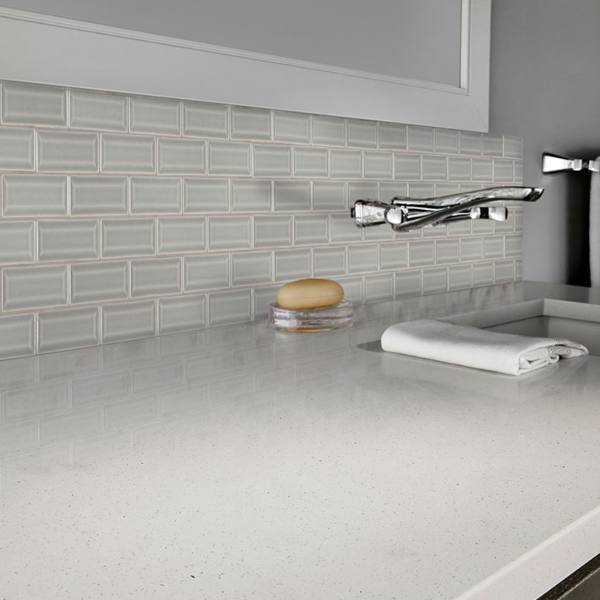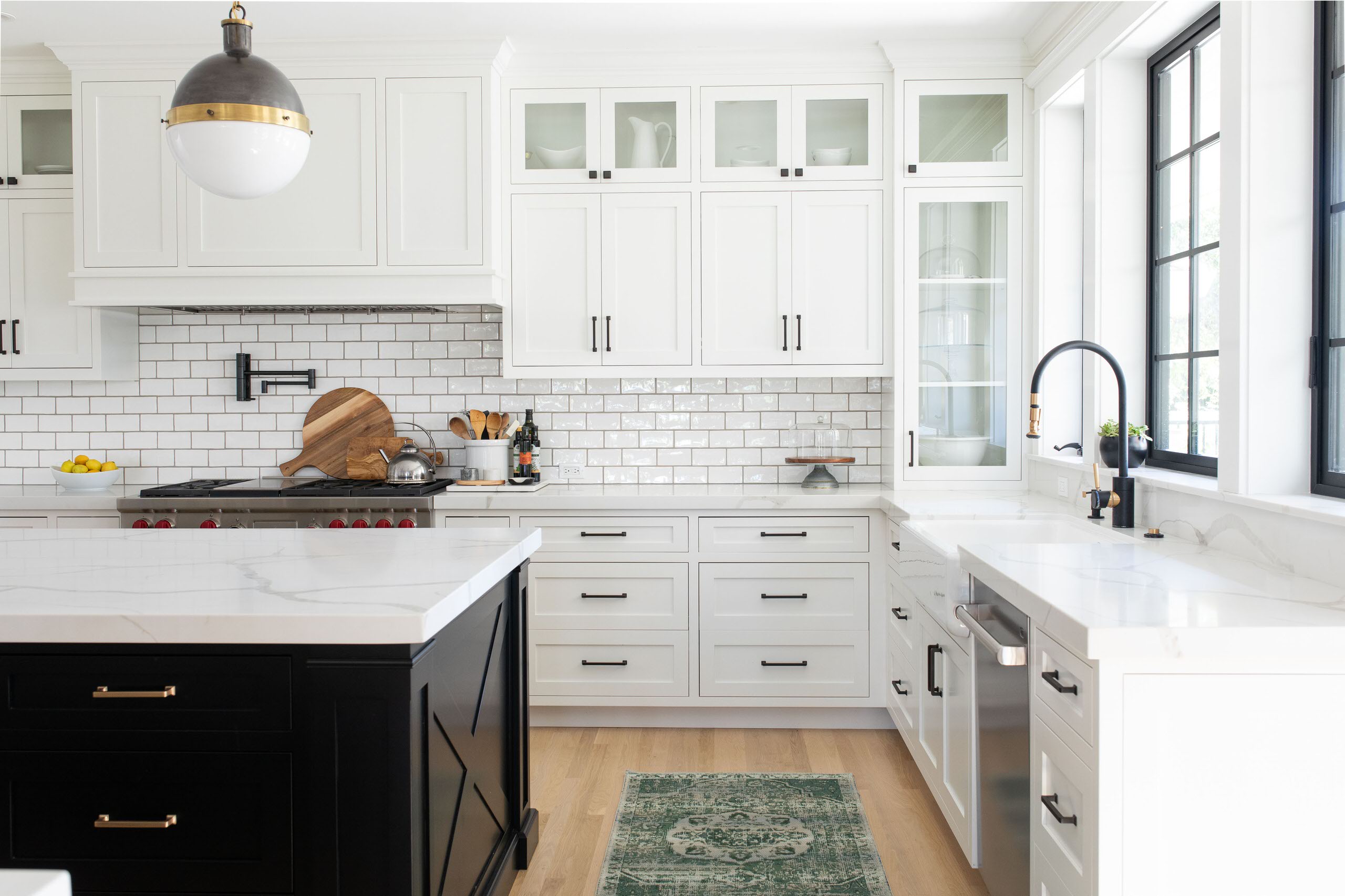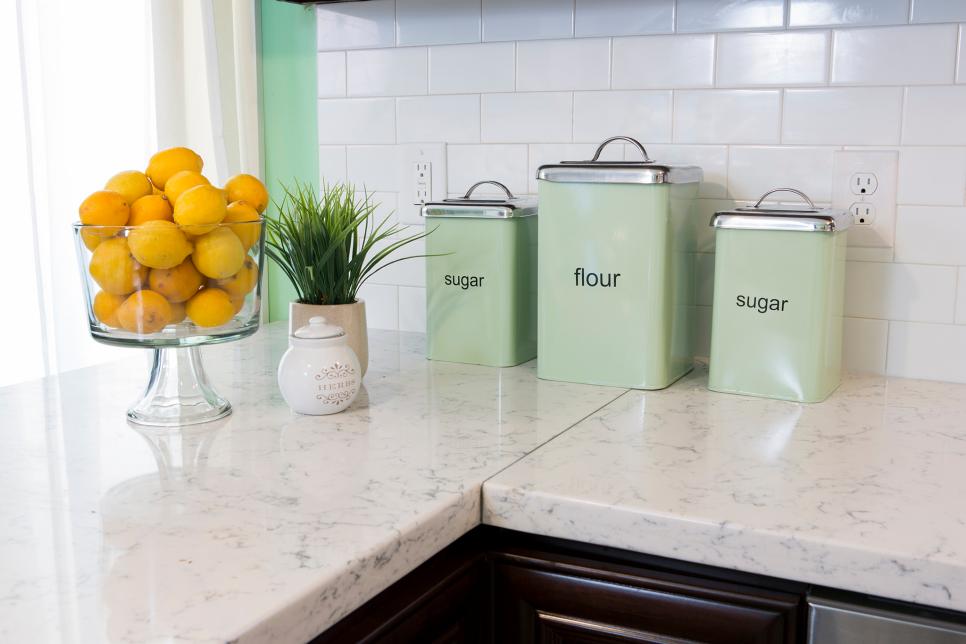Quartz countertops paired with a tile backsplash offer a versatile and durable design solution for modern kitchens and bathrooms. Quartz countertops are engineered stone surfaces made from approximately 90% ground quartz, a natural mineral, and 10% resins, polymers, and pigments. This composition gives quartz countertops their impressive durability, non-porous nature, and a wide range of aesthetic possibilities. When combined with a tile backsplash, the result is a cohesive and stylish look that enhances the functionality and beauty of the space.
One of the primary advantages of quartz countertops is their durability. Unlike natural stone surfaces, quartz countertops are highly resistant to scratches, stains, and heat, making them an ideal choice for high-traffic areas like kitchens. The non-porous nature of quartz also means it is resistant to bacteria and mold, providing a hygienic surface for food preparation. This makes quartz a practical choice for families and avid cooks who need a surface that can withstand daily use without requiring extensive maintenance.
Quartz countertops are available in an extensive range of colors and patterns, from solid colors to intricate designs that mimic the appearance of natural stones like marble and granite. This variety allows homeowners to choose a countertop that matches their style and complements the overall design of the kitchen or bathroom. The consistency in pattern and color that quartz provides, compared to natural stone, is another appealing feature for those seeking a uniform look.
In addition to aesthetics, the practical benefits of quartz countertops include their ease of maintenance. Because they are non-porous, they do not require sealing, unlike natural stone countertops, which need regular sealing to protect against stains. Cleaning quartz countertops is simple and requires only mild soap, water, and a soft cloth. This ease of care makes quartz an attractive option for those who want a beautiful, low-maintenance countertop.

When paired with a tile backsplash, quartz countertops can significantly elevate the design of a kitchen or bathroom. Tile backsplashes come in a variety of materials, including ceramic, porcelain, glass, and natural stone. Each material offers different textures, colors, and patterns, allowing for endless design possibilities. The backsplash serves as a focal point and can complement or contrast the countertop, depending on the desired aesthetic.
The combination of quartz countertops and a tile backsplash offers both visual and functional benefits. Visually, the backsplash can enhance the countertop’s color and pattern, adding depth and interest to the space. Functionally, the backsplash protects the walls from splashes and stains, especially in areas near sinks and stoves. This protective feature is crucial in maintaining the longevity and cleanliness of the walls, preventing moisture damage and making cleaning easier.
When selecting a tile backsplash to pair with quartz countertops, it’s essential to consider the overall design theme and color scheme of the room. For a cohesive look, the backsplash can feature colors and patterns that complement the quartz countertop. For example, a white quartz countertop with subtle veining can be paired with a simple white subway tile backsplash for a classic, timeless look. Alternatively, for a more dynamic appearance, contrasting colors or bold patterns can be chosen for the backsplash to create a striking visual effect.

The size and layout of the tiles used in the backsplash can also impact the overall design. Smaller tiles, such as mosaic tiles, can create a textured and intricate look, while larger tiles can provide a more streamlined and modern appearance. The grout color is another important consideration, as it can either blend in with the tiles for a seamless look or contrast to highlight the tile pattern.
Installing a tile backsplash with quartz countertops can also enhance the value of a home. Both materials are highly desirable in the real estate market due to their durability, low maintenance, and aesthetic appeal. A well-designed kitchen or bathroom featuring these elements can make a strong impression on potential buyers and contribute to a higher resale value. The durability and long-lasting nature of quartz and tile also mean that they will remain attractive and functional for many years, making them a worthwhile investment.
Lighting plays a crucial role in showcasing the beauty of quartz countertops and tile backsplashes. Under-cabinet lighting can highlight the countertop’s surface and the backsplash’s texture and color, creating a warm and inviting atmosphere. Natural light can also enhance the appearance of these materials, bringing out the subtle details in the quartz and the shine or texture in the tiles.

The versatility of quartz countertops and tile backsplashes makes them suitable for various design styles, from contemporary to traditional. In a contemporary kitchen, sleek quartz countertops can be paired with a glossy glass tile backsplash for a modern, minimalist look. In a traditional setting, a quartz countertop with a natural stone-like appearance can be complemented by a classic ceramic tile backsplash. This adaptability allows homeowners to create a personalized space that reflects their style and preferences.
While quartz countertops and tile backsplashes offer many benefits, it is essential to consider the installation process. Quartz countertops are typically installed by professionals due to the precision required in cutting and fitting the material. The installation process involves measuring the area, cutting the quartz to fit, and securing it in place with adhesive. The seams are then sealed to create a smooth, seamless surface. The tile backsplash installation also requires careful planning and execution, particularly in cutting the tiles to fit around outlets and corners.
Quartz countertops combined with a tile backsplash offer a practical, stylish, and versatile solution for kitchens and bathrooms. The durability, ease of maintenance, and wide range of design options make quartz an excellent choice for countertops. When paired with a carefully selected tile backsplash, the result is a cohesive and aesthetically pleasing design that enhances both the functionality and visual appeal of the space. Whether you are looking to update your current kitchen or bathroom or are designing a new space, quartz countertops, and tile backsplashes provide a timeless and valuable addition.

Common Mistakes to Avoid
Inconsistent Design Choices: Choosing a tile backsplash that does not complement the quartz countertop can disrupt the visual harmony of the space. It is important to consider the overall color scheme and style when selecting both elements to ensure they work well together.
Ignoring Grout Color: The grout color can significantly affect the look of the tile backsplash. A grout color that contrasts too sharply with the tiles can draw unwanted attention to the grout lines, while a matching grout can blend in seamlessly. Consider how the grout color will impact the overall design.
Improper Installation: Both quartz countertops and tile backsplashes require precise installation. Improper installation can lead to uneven surfaces, visible seams, or poorly aligned tiles, detracting from the overall appearance and functionality. Always use professional installers for best results.
Neglecting Lighting Considerations: Inadequate lighting can diminish the visual impact of quartz countertops and tile backsplashes. Consider installing under-cabinet lighting to highlight these features and enhance the ambiance of the space.
Overlooking Maintenance Needs: While quartz countertops are low maintenance, it is still important to clean spills promptly and use appropriate cleaners. Similarly, tile backsplashes may require occasional cleaning to remove grime and keep grout lines looking fresh.
Choosing the Wrong Tile Size: The size of the tiles used in the backsplash can affect the room’s perceived size and style. Smaller tiles can make a space feel more detailed and busy, while larger tiles can create a more open and modern look. Consider the room’s size and style when choosing tile sizes.

What are the main benefits of quartz countertops compared to natural stone?
Quartz countertops offer several advantages over natural stone. They are non-porous, making them resistant to stains, bacteria, and mold. This characteristic also eliminates the need for regular sealing, which is required for natural stones like granite and marble. Quartz is also more uniform in color and pattern, providing a consistent look throughout the slab. Additionally, quartz is highly durable and resistant to scratches and heat, making it a practical choice for busy kitchens.
How do I maintain and clean a quartz countertop?
Maintaining a quartz countertop is straightforward. For daily cleaning, use mild dish soap and warm water, wiping the surface with a soft cloth or sponge. Avoid using abrasive cleaners or pads, as they can scratch the surface. For stubborn stains, a non-abrasive household cleaner can be used, but it’s important to avoid products containing bleach or high pH levels. While quartz is heat-resistant, it is advisable to use trivets or hot pads to prevent thermal shock and potential damage.
What types of tile materials are best for backsplashes with quartz countertops?
The choice of tile material for a backsplash with quartz countertops depends on the desired look and functionality. Ceramic and porcelain tiles are popular for their durability and wide range of colors and patterns. Glass tiles offer a sleek, modern appearance and reflect light beautifully, adding brightness to the space. Natural stone tiles, such as marble or slate, can add texture and a natural element, while metal tiles can provide a contemporary and industrial feel. It’s important to consider the overall design and color scheme when selecting the tile material.

Can quartz countertops be damaged by heat?
While quartz countertops are heat-resistant, they are not entirely immune to heat damage. Prolonged exposure to high temperatures can cause discoloration or cracks due to thermal shock. It’s recommended to use trivets or hot pads when placing hot pots, pans, or appliances on the countertop. Avoid placing hot items directly on the quartz surface to preserve its appearance and longevity.
How can I choose the right backsplash to complement my quartz countertop?
Choosing the right backsplash involves considering the color, pattern, and material of the quartz countertop. For a cohesive look, select a backsplash that complements the countertop’s color and design. For example, a neutral quartz countertop pairs well with a simple, clean-lined tile, such as subway tiles. For a bolder look, consider a contrasting color or a patterned tile that adds visual interest. It’s also important to think about the overall style of the kitchen and how the backsplash and countertop will work together to enhance the space’s aesthetic.
Is professional installation necessary for quartz countertops and tile backsplashes?
Professional installation is highly recommended for both quartz countertops and tile backsplashes. Quartz countertops require precise measurement, cutting, and fitting, which are best handled by experienced installers to ensure a seamless finish. Similarly, tile backsplash installation requires careful planning, especially when cutting tiles to fit around outlets and edges. Professional installation ensures that both the countertop and backsplash are installed correctly, securely, and with a high-quality finish.

Related articles: